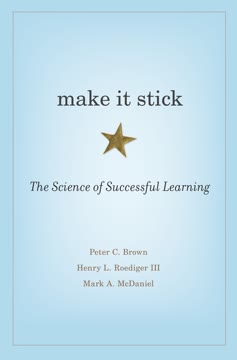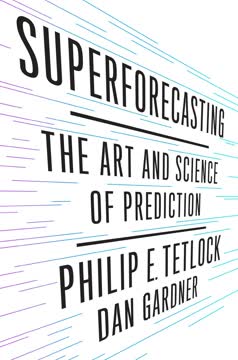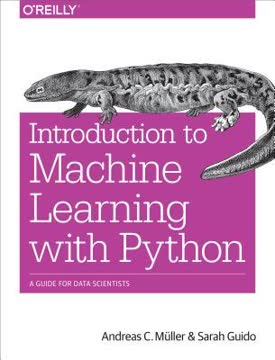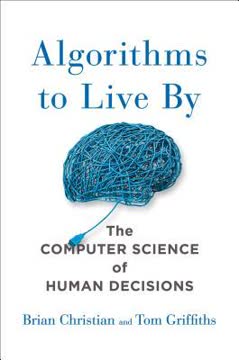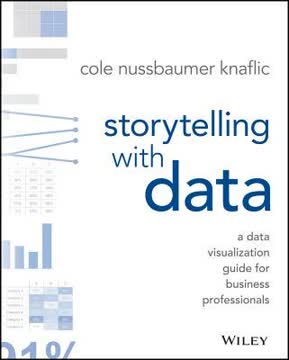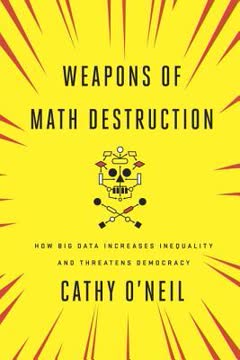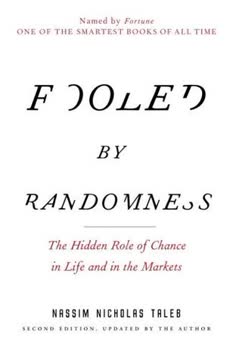ข้อสำคัญ
1. สถิติ: พลังในการเปลี่ยนข้อมูลเป็นความเข้าใจ
การใช้สถิติสามารถบิดเบือนความจริงได้ง่าย แต่การบอกความจริงโดยไม่มีสถิตินั้นยากยิ่งกว่า
การตัดสินใจโดยอาศัยข้อมูล สถิติเป็นเครื่องมือที่ช่วยประมวลผลและวิเคราะห์ข้อมูลจำนวนมหาศาล เปลี่ยนข้อมูลดิบให้กลายเป็นความเข้าใจที่มีความหมาย พลังนี้ช่วยให้เราตอบคำถามสำคัญในหลากหลายสาขา ตั้งแต่เศรษฐศาสตร์จนถึงสาธารณสุข
การก้าวข้ามสัญชาตญาณ การวิเคราะห์ทางสถิติมักเผยความจริงที่สวนทางกับความคิดเดิม ๆ ท้าทายสมมติฐานและอคติของเรา ด้วยการพึ่งพาข้อมูลและการวิเคราะห์อย่างเข้มงวด เราจึงสามารถตัดสินใจได้อย่างรอบคอบและหลีกเลี่ยงข้อผิดพลาดที่เกิดจากการตัดสินใจโดยอารมณ์
ข้อควรระวังทางจริยธรรม แม้ว่าสถิติจะเป็นเครื่องมือทรงพลัง แต่ก็สามารถถูกใช้ในทางที่ผิดหรือถูกตีความผิดได้ การเข้าใจแนวคิดทางสถิติช่วยให้เราประเมินข้ออ้างต่าง ๆ อย่างมีวิจารณญาณ สังเกตการบิดเบือนที่อาจเกิดขึ้น และใช้ข้อมูลอย่างรับผิดชอบเพื่อพัฒนาสังคมของเรา
2. สถิติเชิงพรรณนา: สรุปข้อมูลที่ซับซ้อนให้ง่ายขึ้น
ค่าเฉลี่ยการตีลูกบอลเป็นสถิติเชิงพรรณนาอย่างหนึ่ง
มาตรวัดแนวโน้มศูนย์กลาง ค่าเฉลี่ย ค่ามัธยฐาน และฐานนิยม เป็นวิธีต่าง ๆ ในการบอกตำแหน่ง “กลาง” ของชุดข้อมูล:
- ค่าเฉลี่ย: ค่าเฉลี่ยเลขคณิตที่ไวต่อค่าผิดปกติ
- ค่ามัธยฐาน: ค่ากลางที่ทนต่อค่าผิดปกติ
- ฐานนิยม: ค่าที่เกิดบ่อยที่สุด
มาตรวัดการกระจาย สถิติเหล่านี้บอกถึงการกระจายของข้อมูล:
- ช่วง (Range): ความต่างระหว่างค่าสูงสุดและต่ำสุด
- ส่วนเบี่ยงเบนมาตรฐาน: ระยะห่างเฉลี่ยจากค่าเฉลี่ย
- ความแปรปรวน: กำลังสองของส่วนเบี่ยงเบนมาตรฐาน
การแสดงผลด้วยภาพ กราฟและแผนภูมิช่วยสรุปข้อมูลจำนวนมากได้อย่างมีประสิทธิภาพ:
- ฮิสโตแกรม: แสดงการแจกแจงของข้อมูล
- กล่องแผนภูมิ: แสดงค่ามัธยฐาน ควอไทล์ และค่าผิดปกติ
- แผนภูมิกระจาย: แสดงความสัมพันธ์ระหว่างตัวแปร
3. ความสัมพันธ์: เข้าใจความเชื่อมโยงระหว่างตัวแปร
ความสัมพันธ์ไม่ได้หมายความถึงสาเหตุ
ความแรงและทิศทาง ค่าสัมประสิทธิ์ความสัมพันธ์วัดความแรงและทิศทางของความสัมพันธ์เชิงเส้นระหว่างตัวแปรสองตัว โดยมีค่าตั้งแต่ -1 ถึง 1:
- ความสัมพันธ์บวก: ตัวแปรหนึ่งเพิ่มขึ้น อีกตัวก็มีแนวโน้มเพิ่มขึ้น
- ความสัมพันธ์ลบ: ตัวแปรหนึ่งเพิ่มขึ้น อีกตัวมีแนวโน้มลดลง
- ไม่มีความสัมพันธ์: ไม่มีความสัมพันธ์เชิงเส้นที่ชัดเจน
ข้อจำกัด แม้ว่าความสัมพันธ์จะเผยรูปแบบที่น่าสนใจ แต่ต้องจำไว้ว่าความสัมพันธ์ไม่ใช่การพิสูจน์สาเหตุ ปัจจัยอื่น เช่น ตัวแปรแทรกซ้อน หรือความย้อนกลับของสาเหตุ อาจอธิบายความสัมพันธ์ที่พบได้
การประยุกต์ใช้ในโลกจริง การวิเคราะห์ความสัมพันธ์ถูกใช้ในหลายสาขา:
- การเงิน: วิเคราะห์ความสัมพันธ์ระหว่างสินทรัพย์ลงทุนต่าง ๆ
- การตลาด: หาปัจจัยที่มีผลต่อพฤติกรรมผู้บริโภค
- สุขภาพ: ศึกษาความเชื่อมโยงระหว่างวิถีชีวิตกับความเสี่ยงโรค
4. ความน่าจะเป็น: การนำทางในความไม่แน่นอนและความเสี่ยง
ความน่าจะเป็นไม่เคยผิดพลาด คนที่ใช้ความน่าจะเป็นต่างหากที่ผิดพลาด
แนวคิดพื้นฐาน ความน่าจะเป็นวัดโอกาสที่เหตุการณ์จะเกิดขึ้น โดยมีค่าระหว่าง 0 (เป็นไปไม่ได้) ถึง 1 (แน่นอน):
- เหตุการณ์อิสระ: ผลลัพธ์ของเหตุการณ์หนึ่งไม่ส่งผลต่ออีกเหตุการณ์
- ความน่าจะเป็นมีเงื่อนไข: โอกาสของเหตุการณ์หนึ่งเมื่อเหตุการณ์อื่นเกิดขึ้นแล้ว
- ค่าคาดหวัง: ผลลัพธ์เฉลี่ยจากการทดลองหลายครั้ง
การประเมินความเสี่ยง ความน่าจะเป็นช่วยวัดและจัดการความเสี่ยงในหลายด้าน:
- ประกันภัย: กำหนดเบี้ยประกันตามโอกาสการเคลม
- การเงิน: ประเมินโอกาสลงทุนและความสูญเสียที่อาจเกิดขึ้น
- สาธารณสุข: ประเมินผลกระทบของมาตรการหรือการระบาดของโรค
ความเข้าใจผิดที่พบบ่อย การเข้าใจความน่าจะเป็นช่วยหลีกเลี่ยงข้อผิดพลาด:
- ความเชื่อผิดของนักพนัน: คิดว่าผลลัพธ์ที่ผ่านมา ส่งผลต่อเหตุการณ์อิสระในอนาคต
- การละเลยอัตราฐาน: มองข้ามความน่าจะเป็นพื้นฐานของเหตุการณ์
- ความผิดพลาดในการรวมเหตุการณ์: คิดว่าเงื่อนไขเฉพาะมีโอกาสมากกว่าเงื่อนไขทั่วไป
5. ทฤษฎีบทจำกัดกลาง: รากฐานของการอนุมานทางสถิติ
ทฤษฎีบทจำกัดกลางคือ “เลอบรอน เจมส์” แห่งวงการสถิติ
หลักการสำคัญ ทฤษฎีบทจำกัดกลางกล่าวว่า การแจกแจงของค่าเฉลี่ยตัวอย่างจะเข้าใกล้การแจกแจงแบบปกติ ไม่ว่าจะเป็นการแจกแจงของประชากรอย่างไร ตราบใดที่ขนาดตัวอย่างใหญ่พอ
ผลกระทบต่อการอนุมาน ทฤษฎีบทนี้ช่วยให้เราสามารถ:
- สรุปข้อมูลประชากรจากตัวอย่าง
- คำนวณช่วงความเชื่อมั่นของพารามิเตอร์ประชากร
- ทดสอบสมมติฐานเกี่ยวกับประชากร
การประยุกต์ใช้ในทางปฏิบัติ ทฤษฎีบทจำกัดกลางมีความสำคัญใน:
- การสำรวจความคิดเห็นและวิจัยเชิงสำรวจ
- การควบคุมคุณภาพในกระบวนการผลิต
- การสร้างแบบจำลองทางการเงินและการประเมินความเสี่ยง
6. การวิเคราะห์การถดถอย: การแยกแยะความสัมพันธ์เชิงสาเหตุ
การวิเคราะห์การถดถอยคือยาวิเศษของงานวิจัยสังคมศาสตร์
ตัวแปรหลายตัว การวิเคราะห์การถดถอยช่วยให้เราศึกษาความสัมพันธ์ระหว่างตัวแปรตามกับตัวแปรอิสระหลายตัว พร้อมควบคุมตัวแปรแทรกซ้อน
ประเภทของการถดถอย:
- การถดถอยเชิงเส้น: สำหรับตัวแปรตามที่เป็นตัวเลขต่อเนื่อง
- การถดถอยโลจิสติก: สำหรับตัวแปรตามที่มีค่าเป็นสองสถานะ
- การถดถอยหลายตัวแปร: รวมตัวแปรอิสระหลายตัว
การตีความผลลัพธ์ ประเด็นสำคัญของผลการถดถอย:
- ค่าสัมประสิทธิ์: บ่งบอกความแรงและทิศทางของความสัมพันธ์
- ค่า R-squared: วัดสัดส่วนความแปรปรวนที่โมเดลอธิบายได้
- ความมีนัยสำคัญทางสถิติ: ประเมินความน่าเชื่อถือของผลลัพธ์
7. การประเมินโครงการ: การวัดผลกระทบของการแทรกแซง
เราใส่ใจในสิ่งที่ได้ผลจริง
การออกแบบเชิงทดลอง การทดลองแบบสุ่มควบคุมเป็นมาตรฐานทองคำ:
- กลุ่มทดลอง: ได้รับการแทรกแซง
- กลุ่มควบคุม: ไม่ได้รับการแทรกแซง
- การสุ่มจัดกลุ่ม: เพื่อให้กลุ่มมีความเท่าเทียมกัน
วิธีการกึ่งทดลอง เมื่อไม่สามารถสุ่มได้:
- วิธีต่างระหว่าง-ต่างเวลา: เปรียบเทียบการเปลี่ยนแปลงระหว่างกลุ่ม
- การถดถอยแบบตัดขอบ: ใช้เกณฑ์ตัดสินใจที่ชัดเจนในการคัดเลือก
- ตัวแปรเครื่องมือ: ใช้ปัจจัยภายนอกจำลองการสุ่ม
ความท้าทาย การประเมินโครงการต้องจัดการกับ:
- อคติการเลือก: ผู้เข้าร่วมอาจแตกต่างจากผู้ไม่เข้าร่วม
- ผลกระทบล้น: การแทรกแซงอาจส่งผลต่อกลุ่มควบคุมโดยทางอ้อม
- ความเป็นสากล: ผลลัพธ์อาจไม่สามารถใช้ได้กับบริบทอื่น
8. คุณภาพข้อมูล: รากฐานของการวิเคราะห์ที่น่าเชื่อถือ
ข้อมูลขยะเข้า ข้อมูลขยะออก
การเก็บข้อมูล การรับประกันคุณภาพข้อมูลเริ่มจากวิธีการเก็บข้อมูลที่เหมาะสม:
- การสุ่มตัวอย่างที่เป็นตัวแทน: หลีกเลี่ยงอคติการเลือก
- ขนาดตัวอย่างที่เหมาะสม: สมดุลระหว่างความแม่นยำและต้นทุน
- ขั้นตอนมาตรฐาน: ลดข้อผิดพลาดในการวัด
การทำความสะอาดข้อมูล การเตรียมข้อมูลสำหรับการวิเคราะห์รวมถึง:
- การจัดการค่าที่ขาดหาย: เติมข้อมูลหรือคัดออก
- การตรวจจับและแก้ไขค่าผิดปกติ
- การตรวจสอบความสอดคล้องและข้อผิดพลาดเชิงตรรกะ
การจัดการข้อมูล การรักษาความสมบูรณ์ของข้อมูลต้อง:
- บันทึกแหล่งที่มาและตัวแปรอย่างชัดเจน
- เก็บรักษาและสำรองข้อมูลอย่างปลอดภัย
- ควบคุมเวอร์ชันของชุดข้อมูลและสคริปต์วิเคราะห์
9. ข้อผิดพลาดทางสถิติที่พบบ่อย: หลีกเลี่ยงการตีความผิด
การทุจริตทางสถิติมักไม่เกี่ยวกับคณิตศาสตร์ที่ผิดพลาด
ความสัมพันธ์กับสาเหตุ ควรพิจารณาคำอธิบายอื่น ๆ สำหรับความสัมพันธ์ที่พบ:
- ความย้อนกลับของสาเหตุ: ผลลัพธ์อาจเป็นสาเหตุของสิ่งที่คิดว่าเป็นผล
- ตัวแปรแทรกซ้อน: ปัจจัยอื่นอาจอธิบายความสัมพันธ์
- ความสัมพันธ์เทียม: โอกาสสุ่มอาจสร้างความสัมพันธ์ที่หลอกลวง
อคติการเลือก ระวังตัวอย่างที่ไม่เป็นตัวแทน:
- อคติการรอดชีวิต: พิจารณาเฉพาะกรณีที่ประสบความสำเร็จ
- อคติการเลือกด้วยตนเอง: ผู้เข้าร่วมเลือกเข้าร่วมเอง
- อคติการตีพิมพ์: เผยแพร่เฉพาะผลลัพธ์ที่เป็นบวก
การใช้ค่า p อย่างผิดวิธี หลีกเลี่ยงการพึ่งพาความมีนัยสำคัญทางสถิติเกินไป:
- การปรับแต่งข้อมูล (p-hacking): บิดเบือนข้อมูลหรือวิเคราะห์เพื่อให้ได้ผลนัยสำคัญ
- การเปรียบเทียบหลายครั้ง: เพิ่มความเสี่ยงของผลบวกเท็จ
- ความสำคัญในทางปฏิบัติ: ความมีนัยสำคัญทางสถิติไม่เท่ากับความสำคัญจริง
10. การประยุกต์ใช้ในโลกจริง: สถิติในทางปฏิบัติ
สถิติช่วยตอบคำถามเหล่านี้ได้
สาธารณสุข สถิติช่วยสนับสนุนการตัดสินใจที่สำคัญ:
- ประเมินประสิทธิภาพของวัคซีนและการรักษา
- ระบุปัจจัยเสี่ยงของโรค
- สร้างแบบจำลองการแพร่ระบาดของโรคติดเชื้อ
เศรษฐศาสตร์และการเงิน เครื่องมือทางสถิติช่วยชี้นำการวางนโยบายและการลงทุน:
- ทำนายการเติบโตทางเศรษฐกิจและอัตราเงินเฟ้อ
- ประเมินผลกระทบของการเปลี่ยนแปลงนโยบาย
- บริหารพอร์ตการลงทุนและความเสี่ยง
สังคมศาสตร์ สถิติช่วยให้เราเข้าใจพฤติกรรมมนุษย์:
- วิเคราะห์รูปแบบการลงคะแนนและแนวโน้มทางการเมือง
- ศึกษาผลสัมฤทธิ์ทางการศึกษาและมาตรการแทรกแซง
- ประเมินประสิทธิผลของโครงการสังคม
เทคโนโลยี การประยุกต์ใช้สถิติในยุคปัจจุบันรวมถึง:
- การเรียนรู้ของเครื่องและปัญญาประดิษฐ์
- ระบบแนะนำสินค้าและบริการ (เช่น Netflix, Amazon)
- การประมวลผลภาษาธรรมชาติและการวิเคราะห์ความรู้สึก
อัปเดตล่าสุด:
FAQ
What's Naked Statistics about?
- Demystifying Statistics: Naked Statistics by Charles Wheelan aims to simplify statistics, making it accessible to a general audience. It focuses on understanding concepts rather than memorizing formulas.
- Real-World Applications: The book uses relatable examples, such as sports statistics and polling data, to show how statistics explain everyday phenomena and their relevance in fields like economics and health.
- Empowering Readers: Wheelan encourages readers to critically analyze data, empowering them to understand and interpret statistical information confidently.
Why should I read Naked Statistics?
- Engaging Writing Style: Wheelan's humorous and engaging narrative makes learning about statistics enjoyable, with personal anecdotes and relatable examples.
- Practical Knowledge: The book equips readers with tools to interpret data critically, which is crucial in a data-driven world for making informed decisions.
- Accessible to All: Designed for readers with little to no background in math, Naked Statistics breaks down complex concepts into digestible pieces.
What are the key takeaways of Naked Statistics?
- Statistics Are Everywhere: Statistics play a crucial role in various aspects of life, from sports to politics, helping navigate the world more effectively.
- Correlation vs. Causation: Understanding the difference between correlation and causation is essential, as correlation does not imply causation.
- Central Limit Theorem: This foundational concept allows for powerful inferences about populations based on sample data, crucial for statistical analysis.
What is the Central Limit Theorem in Naked Statistics?
- Definition: The theorem states that the means of large samples from a population will be normally distributed around the population mean.
- Importance in Statistics: It underpins many statistical methods, including hypothesis testing and confidence intervals, allowing sample data to reflect population characteristics.
- Practical Application: Researchers can draw conclusions from limited data, as sample means cluster around the true population mean.
How does Naked Statistics explain correlation?
- Understanding Correlation: Correlation measures the degree to which two variables are related, with positive correlation indicating both increase together and negative indicating the opposite.
- Correlation Coefficient: Ranges from -1 to 1, with values closer to 1 or -1 indicating a stronger relationship, and 0 suggesting no correlation.
- Causation Misconceptions: Emphasizes that correlation does not imply causation, a common misconception in statistical analysis.
What are some common statistical errors discussed in Naked Statistics?
- Misleading Statistics: Statistics can be manipulated to mislead, highlighting the importance of critical thinking when interpreting claims.
- Overconfidence in Models: Warns against overconfidence in statistical models, which can create a false sense of security, as seen in the 2008 financial crisis.
- Ignoring Context: Errors often arise from failing to consider data context, making understanding background and methodology essential.
What is the Monty Hall Problem in Naked Statistics?
- Game Show Scenario: Based on Let’s Make a Deal, contestants choose one of three doors, with a car behind one and goats behind the others.
- Switching Doors: After a goat is revealed, switching doors increases the chance of winning the car from 1/3 to 2/3.
- Intuitive Explanation: Illustrates how intuition can lead to incorrect conclusions about probability, clarifying why switching is better.
How does Naked Statistics address the importance of data?
- Garbage In, Garbage Out: Emphasizes that data quality is crucial for accurate analysis, as poor data leads to misleading conclusions.
- Representative Samples: Discusses the importance of using representative samples for valid inferences about larger populations.
- Data Collection Challenges: Acknowledges challenges like selection bias, essential for accurate interpretation of statistical results.
What is the significance of descriptive statistics in Naked Statistics?
- Summarizing Data: Descriptive statistics simplify complex data sets into meaningful insights, making trends and patterns easier to understand.
- Measures of Central Tendency: Explains mean, median, and mode, which describe the center of a data distribution, each with strengths and weaknesses.
- Understanding Variability: Includes measures like standard deviation, indicating data spread, crucial for understanding reliability and significance.
How does Naked Statistics explain the concept of probability?
- Definition of Probability: Studies uncertainty and likelihood of outcomes, helping quantify risks and make informed decisions.
- Independent and Dependent Events: Distinguishes between events where outcomes are unrelated and those where they are related, vital for calculations.
- Real-World Applications: Illustrates probability use in fields like finance and healthcare, assessing risks and making predictions.
How does Naked Statistics explain statistical inference?
- Understanding Inference: Uses sample data to make conclusions about a population, illustrated through examples like drug effectiveness trials.
- Hypothesis Testing: Introduces hypothesis testing, starting with a null hypothesis and using data to decide whether to reject it.
- Confidence Levels: Explains confidence levels, typically set at 95%, indicating the reliability of study results.
What are the best quotes from Naked Statistics and what do they mean?
- “It’s easy to lie with statistics, but it’s hard to tell the truth without them.”: Highlights statistics' power in shaping narratives and the importance of responsible use.
- “Statistics can help us process data, which is really just a fancy name for information.”: Emphasizes statistics' role in making sense of vast data, essential for informed decision-making.
- “The paradox of statistics is that they are everywhere—but the discipline itself has a reputation for being uninteresting and inaccessible.”: Points out the irony of statistics' integral role yet perceived dullness, motivating efforts to make it engaging.
รีวิว
หนังสือ Naked Statistics ได้รับคำชื่นชมอย่างกว้างขวางในแง่ที่ช่วยให้สถิติกลายเป็นเรื่องง่ายและน่าสนใจผ่านตัวอย่างจากชีวิตจริงและอารมณ์ขันที่แทรกอยู่ตลอดเล่ม ผู้อ่านชื่นชอบการอธิบายที่ชัดเจนของแนวคิดซับซ้อนโดยไม่ต้องพึ่งพาคณิตศาสตร์หนัก ๆ แม้ว่าบางคนจะมองว่าเนื้อหาอาจดูพื้นฐานเกินไปสำหรับผู้ที่มีความรู้สถิติมาก่อนก็ตาม หนังสือเล่มนี้ยังได้รับการยกย่องในฐานะเครื่องมือที่ช่วยเสริมสร้างทักษะการคิดวิเคราะห์เกี่ยวกับข้ออ้างทางสถิติ ข้อวิจารณ์ที่พบได้บ้างคือบางช่วงอาจรู้สึกน่าเบื่อและการใช้ตัวอย่างจากกีฬาของอเมริกาบ่อยเกินไป โดยรวมแล้ว หนังสือเล่มนี้เหมาะอย่างยิ่งสำหรับผู้เริ่มต้นและผู้อ่านทั่วไปที่สนใจทำความเข้าใจเรื่องสถิติอย่างลึกซึ้งและเป็นระบบ
Similar Books


